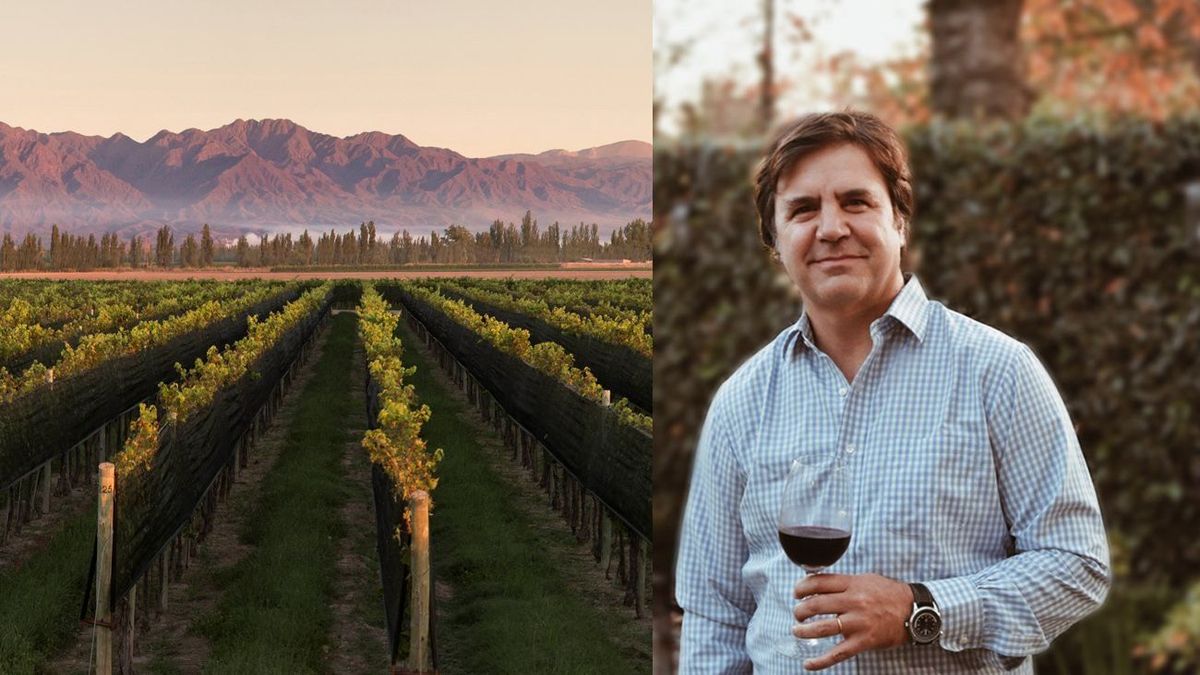The Swiss businessman set up the Colomé Group in Argentina, which in addition to Colomé added the Amalaya winery. Outside the country, Hess had vineyards in Napa Valley, California, and also in Australia and South Africa.
When Hess died in 2023, he had already divested himself of his wineries in Australia and South Africa. And his daughters and sons-in-law they took control and the businesses were divided in the United States and Argentina.
This is how the Colomé Group became currently managed by the second generation of the familyin this case by Larissa and Christoph Ehrbar. This couple, who met in Buenos Aires, also fell in love with the Salta landscape. They had a daughter who was born in the province and there they found one of their favorite places in the world.
Larissa and Christoph reassembled the winery’s management team, leading which Manuel Lanus in the role of CEO of the company.
During the presentation of a new wine from Amalaya wineryCourt of Origin, Manuel Lanús spoke with Scope about the current situation of the winery in an adverse economic context for all winemaking activity.
Journalist: According to reports from the sector, the industry is going through its worst level of activity in the last 15 years. How are Colomé navigating this complicated economic situation?
Manuel Lanus: In this negative context, we feel a little privileged by the shareholder we have, the Larissa and Christoph Ehrbar family, who have the determination and vision to maintain that to overcome this moment it is necessary to be closer to the consumer and our own teams . In the last year and a half we have made very important investments to achieve that goal.
For example, today we have an Argentine representative in Los Angeles, who tours the United States and Canada every month presenting the wine, telling the story to different clients and commercial teams of the distributors in that country.
We have another Argentinian based in Berlin who we hired in September 2023, with enormous experience in the industry who is traveling throughout Europe and looking for opportunities, close to customers and importers and distributors.
If I start to think about different important decisions that we have made as directors in recent years in a situation of market retraction, that is, we are going to continue advancing step by step, body to body, always close to the clients.
We told our importer in Brazil that we want to change the trend of declining sales. We ask what you need, incentives for sales teams, trips for promotion, advertising investments, that is, we get involved from here to help our representatives to achieve that recovery that we are looking for.
Q: How did you arrive at this concept of building closeness?
ML: It is a process in which we are increasingly involved. At some point with the pandemic we thought that that had been cut off and that everything would be online. But today that work is more alive than ever. Today we are a small fish in the ocean. Now, after the pandemic, there are new wineries in many places around the world. Today there are people who make wines in Entre Ríos, in Balcarce, in Córdoba, Chubut, here nearby in Campana.
Making wine is a fun, appetizing task that sometimes gives status, and that is why there are many people who turned to this industry. And they began to make wines in regions that were previously unthinkable. And with the help of technology and the right know-how, you can make wines that are correct. Today there are very good products in non-traditional areas for viticulture.
The consumer, especially after the pandemic, now travels to Brazil and wants to drink a Brazilian sparkling wine. And if you travel to Córdoba and eat a snack with a wine from the province, give it a try. There is a revaluation of the regional and local product.
Q: Does the domestic market, even though punished, serve to shore up the drop in exports?
M.L.: Part of our strategy is to be diversified. It is not good to have a project based 100 percent on export. Because the exchange rate varies and you are left barefoot. Or it doesn’t help to have a business 100 percent in the domestic market. What we are looking for is a balance or a good balance sheet composition according to the different market situations.
Because today they declare war on you anywhere in Europe and the market becomes complicated. The same if something happens in the United States. You have to have a variety of possibilities to deal with changes of any kind.
On the other hand, as its own project, as a business identity, it is important that the winery has a strong foothold in the domestic market, because it consolidates and confirms its history and identity.
Q: What is the winery’s mix like today?
ML: It depends on the label, but it can be said that 60% is local market and 40% is export. This new wine that we present today, Corte de Origen, is much more designed for the local wine bar and restaurant market. I don’t think we’ll export it. There are different maturations of brands or labels that have yet to occur.
Apart from a context of global sales contraction, importers ask us not to offer them more varieties of wine. They ask for a certain amount because it is not useful for them to continue adding complexity to the offer, it is better to focus. Then we go abroad with Colome Estate, Colomé Torrontés, Amalaya Malbec, Altura Máxima and not much else.
Also because in addition to the Argentine wineries, importers have others to offer their clients. Today importers, as well as restaurants, are lowering exposure. They ask for less quantity and something different. If they receive a large amount they have to start explaining the difference between one and the other and the sales task becomes more complex.
Q: What is happening with the behavior of prices abroad?
ML: There is international inflation that ranges from 3 to 5 percent, which can sometimes be transferred to prices abroad, but with limitations. If I say in England that I am going to increase Torrontés by 5 percent, they accept it but I run risks, because surely a while before there was a Portuguese, a Spanish, a New Zealand, a Chilean or an Australian producer, who not only do not increase but rather they lower prices, either because they have more backers, because they want to win markets, for whatever reason. Therefore, the international price can be increased but at the risk of losing markets.
Q: How is the domestic market responding?
ML: Argentina has great players in the local market, but it does not have the strong concentration that there is in other countries. In Chile, for example, there are five groups that concentrate 90 percent of the market. Here we have ten or fifteen important players, but they still coexist with small and medium producers, who are not few. But the pie is not growing at this moment, what there is is a movement to see who gets bigger at the expense of someone else who gets smaller.
Q: Is there an improvement in the performance of the Argentine economy?
ML: Today, beyond the situation, Colomé’s attitude is to continue investing and not retreat. And faced with a possible improvement in economic conditions, I respond with the word “amalaya”, which means something like “hope for a miracle” in the indigenous language.
That’s why we don’t stop investments. And on the external front, this investment is taking place mainly in human resources, in the United States, in Europe, also in Asia where we are now incorporating a person, and in listening to importers to provide answers and solutions to their needs.
And in the local market we invest in actions like the one we present today, which is to release Corte de Origen, from the Amalaya winery, a new wine that meets the needs of demand in restaurants, which asked for something different, something more exclusive. It is a wine tailor-made for the wine bar and restaurant. In this case, the decision to launch this is another way to reaffirm the objective that we set for ourselves to continue generating investments to be increasingly closer to our clients.
Q: What characteristics does this new wine have?
ML: It is a Malbec blend that respects the origin of the Calchaquí valley, which includes Cabernet Sauvignon and Tannat, created under the direction of Jorge Noguera, the winery’s winemaker. This release symbolizes the careful work in the vineyard and the evolution of each strain and reflects the perfect balance that characterizes the Cafayate region. Corte de Origen is a tribute to the varieties grown in the Calchaquí Valley, celebrating their special expression in this high-altitude terroir.
Source: Ambito
I am a 24-year-old writer and journalist who has been working in the news industry for the past two years. I write primarily about market news, so if you’re looking for insights into what’s going on in the stock market or economic indicators, you’ve come to the right place. I also dabble in writing articles on lifestyle trends and pop culture news.




